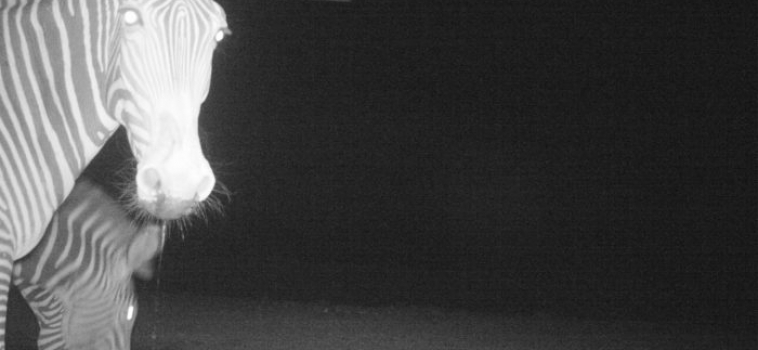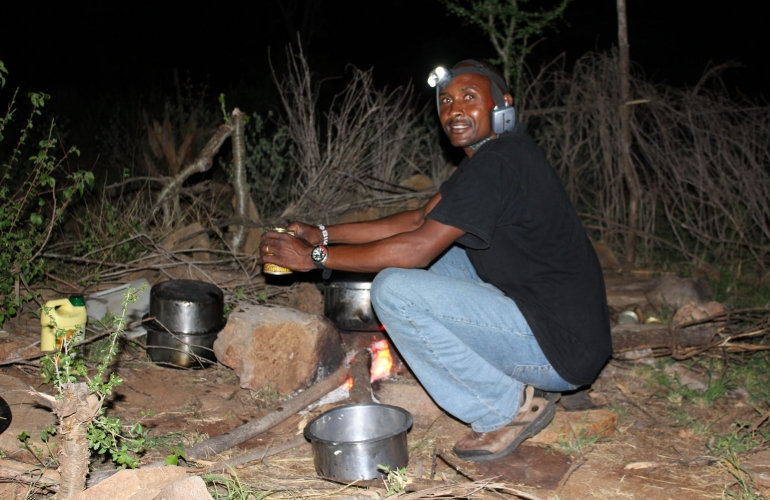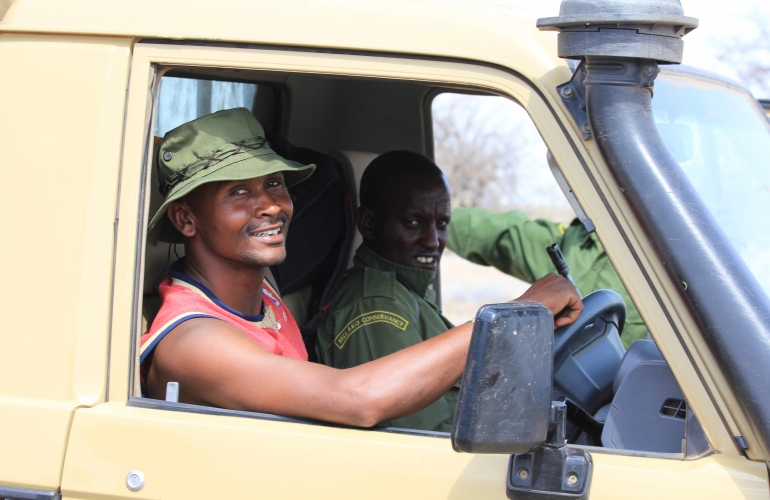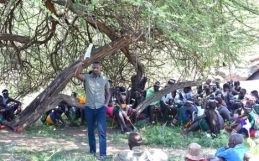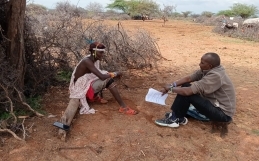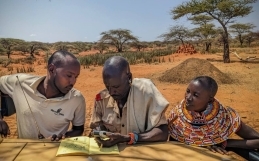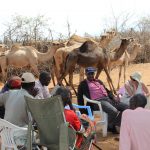During this year’s long dry season from July to October 2013, we monitored water use in Laisamis where our Grevy’s Zebra Warrior Program operates. We wanted to know more about how Grevy’s zebra use water in this region as it is a very scarce resource.
Of the three water points monitored, the Laisamis River, which is seasonal, was the most important source of water for Grevy’s zebra. The Laisamis River provides natural permanent water in the form of wells and seepage pools for the residents of Laisamis town and their livestock, as well as for migrating pastoralists. It is also a critical source of water for important wildlife species. The dependence of people and animals on this resource undoubtedly makes it the most important water source in the Laisamis region.
Camera trap results showed that when Grevy’s zebra drank at the Laisamis River, the average herd size was 30 animals. In addition, although we could not sex and age all the Grevy’s zebra, of those we could, the majority were females and they were often accompanied by foals.

Grevys zebra captured drinking from wells and seepage
This reflects the fact that lactating Grevy’s zebra need to drink more frequently than other classes of Grevy’s zebra and again highlights the critical importance of the Laisamis River to this population.
Grevy’s zebra always drank at night between 7.45 pm and 5.45 am. As the dry season intensified, camels from neighbouring communities would also converge on the water. This extended the drinking time of livestock into the night when camels were recorded drinking between 2.30 and 5 am.
The Laisamis River is under threat from growing urban development, uncontrolled sand harvesting and increasing pressure from livestock especially during the dry season. The social and environmental implications of this are extremely serious. We are working with Melako Community Conservancy, the Northern Rangelands Trust, and other stakeholders to explore options to rehabilitate this water in the long-term to ensure it remains a sustainable source of water for the people and wildlife of the region.
Ropi our driver was hands-on with the camera trapping project and when asked about the experience he said:

Camels drinking during the night
“Camera-trapping is a new skill that I have learnt which I am really happy about. I realised that all wildlife species in Laisamis are drinking at night. The cameras pick up a lot of things that we wouldn’t otherwise know. For example, we know the numbers of Grevy’s zebra coming to a water point and we can confirm if they get the water.
The cameras also captured livestock so when we see livestock occupying the water through the night we know that it’s difficult for the Grevy’s zebra to access it too. We were also able to monitor the health of the Grevy’s and we could tell the composition of the group, for example, if there were foals or pregnant females.”
